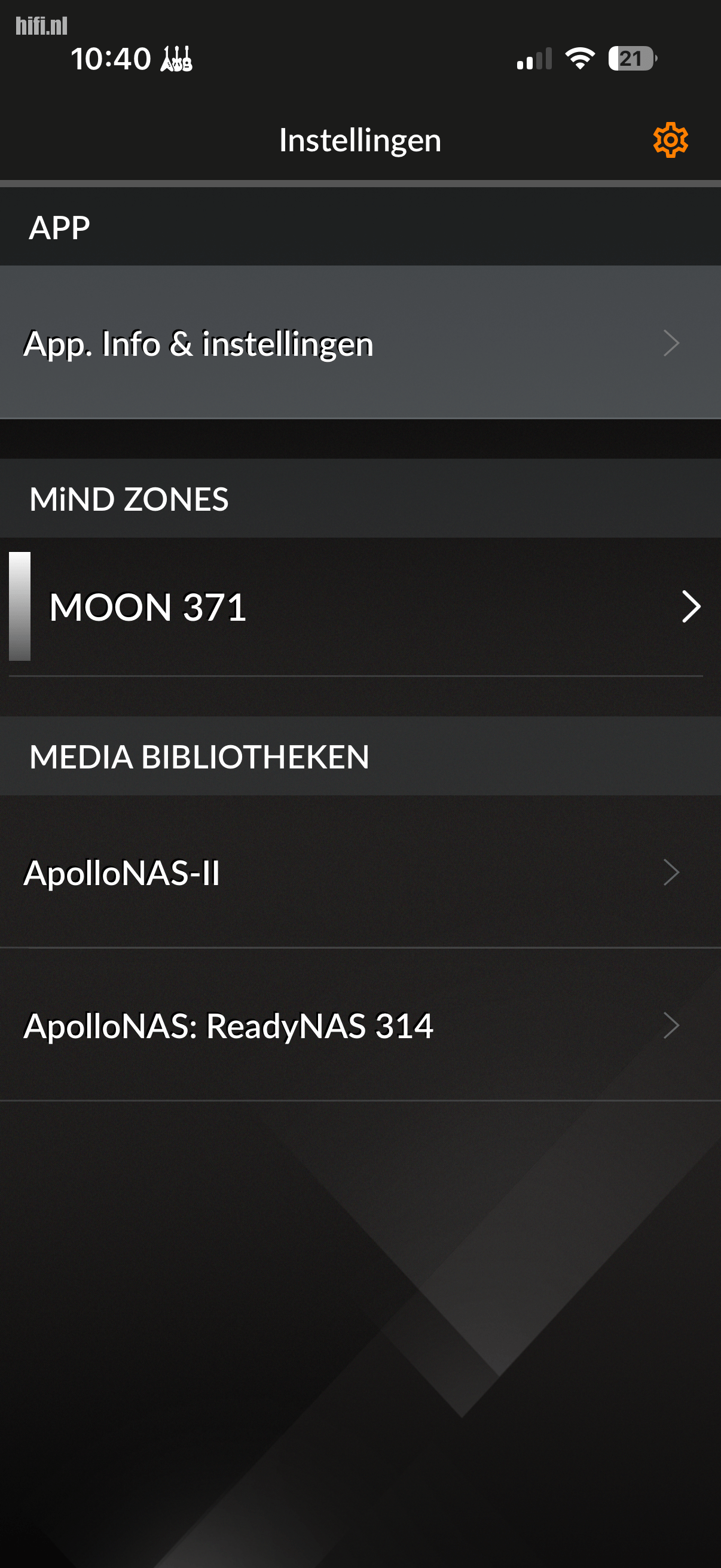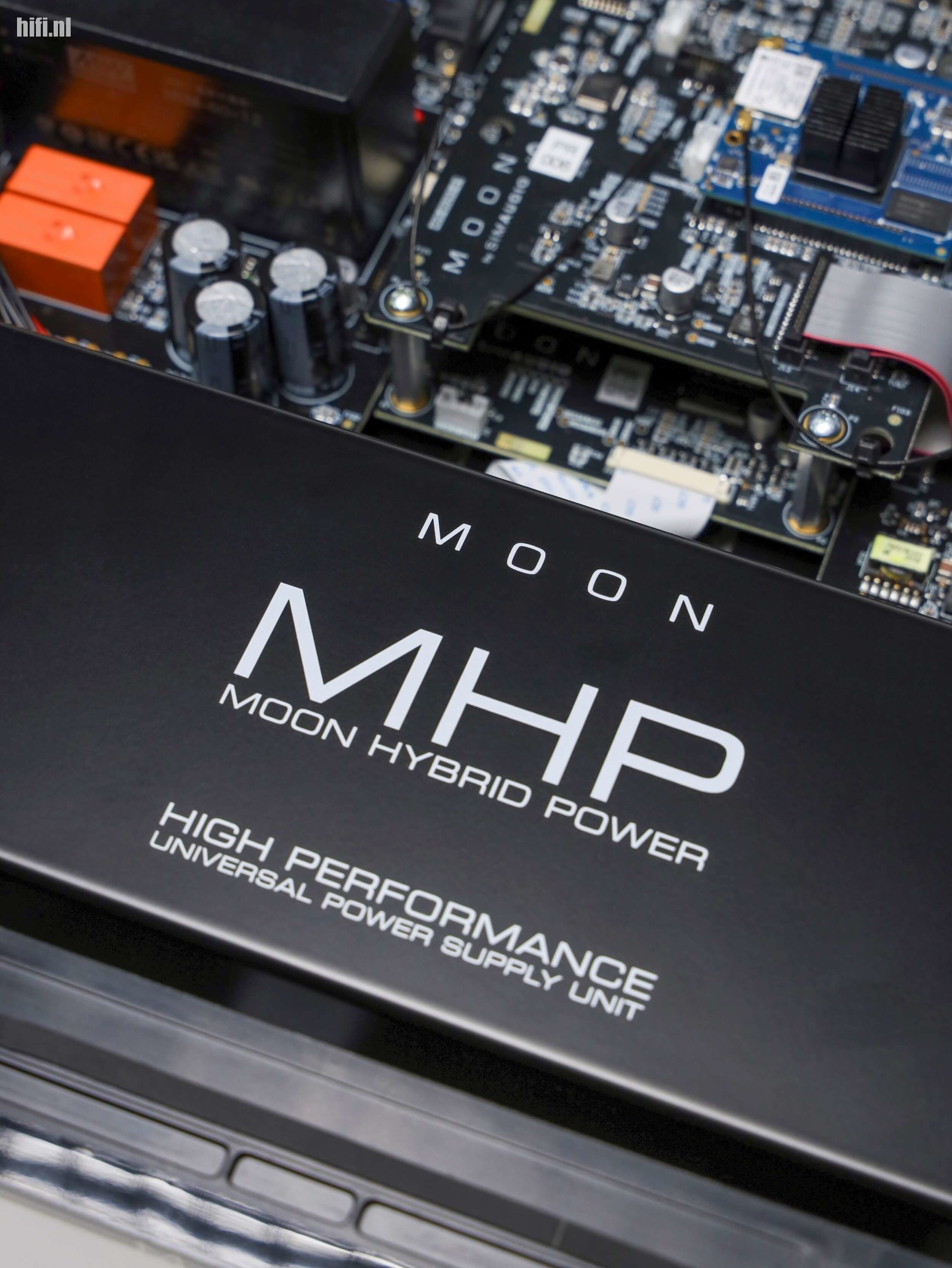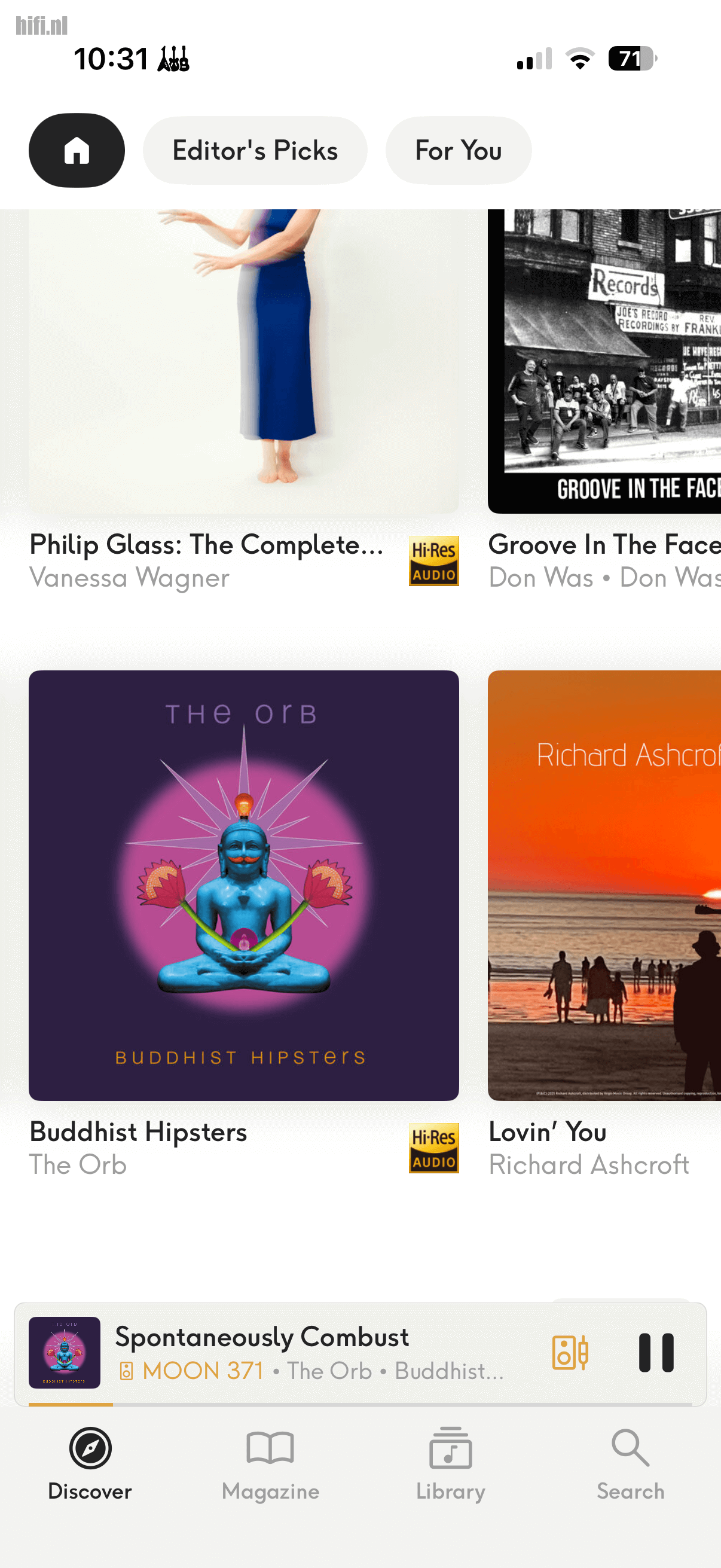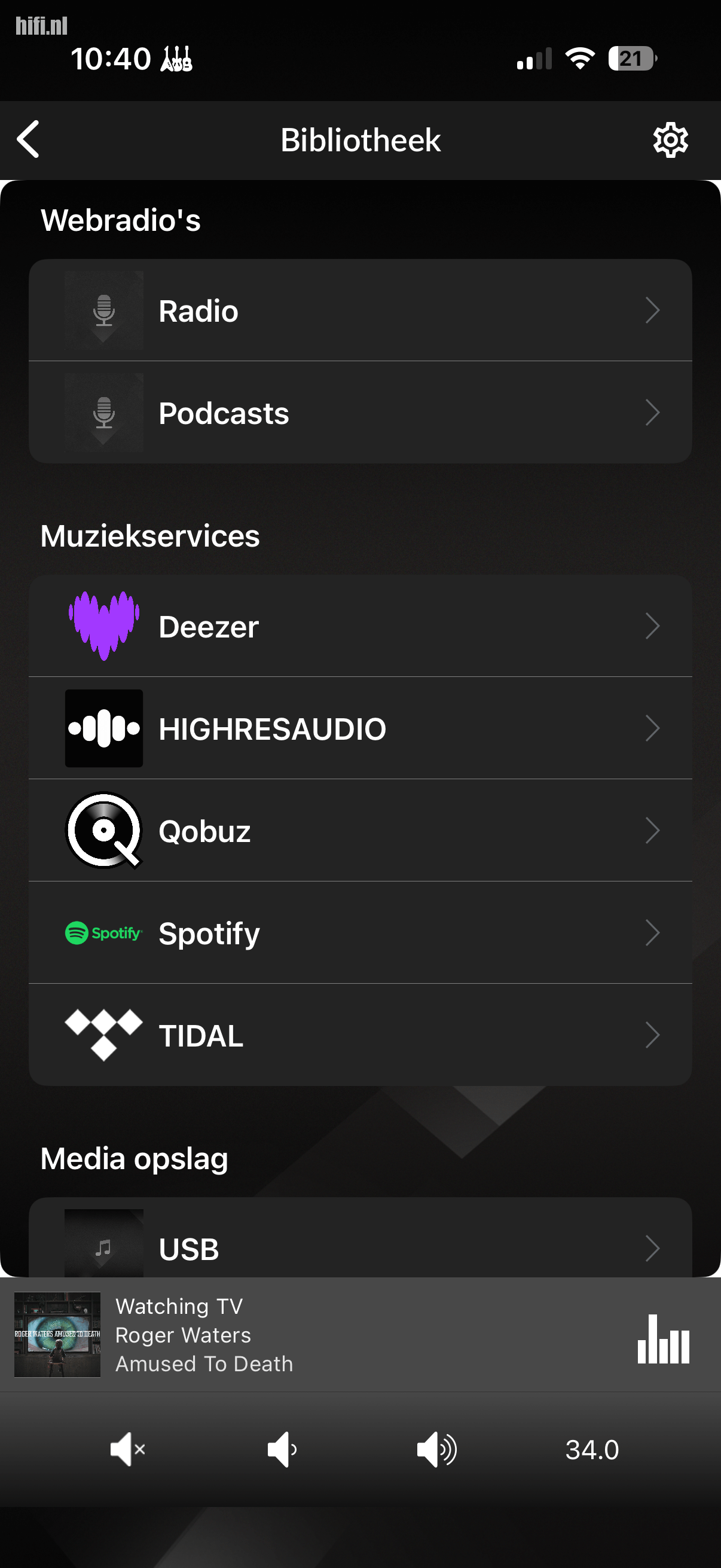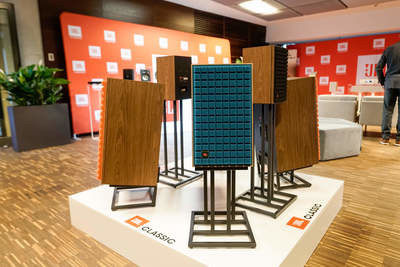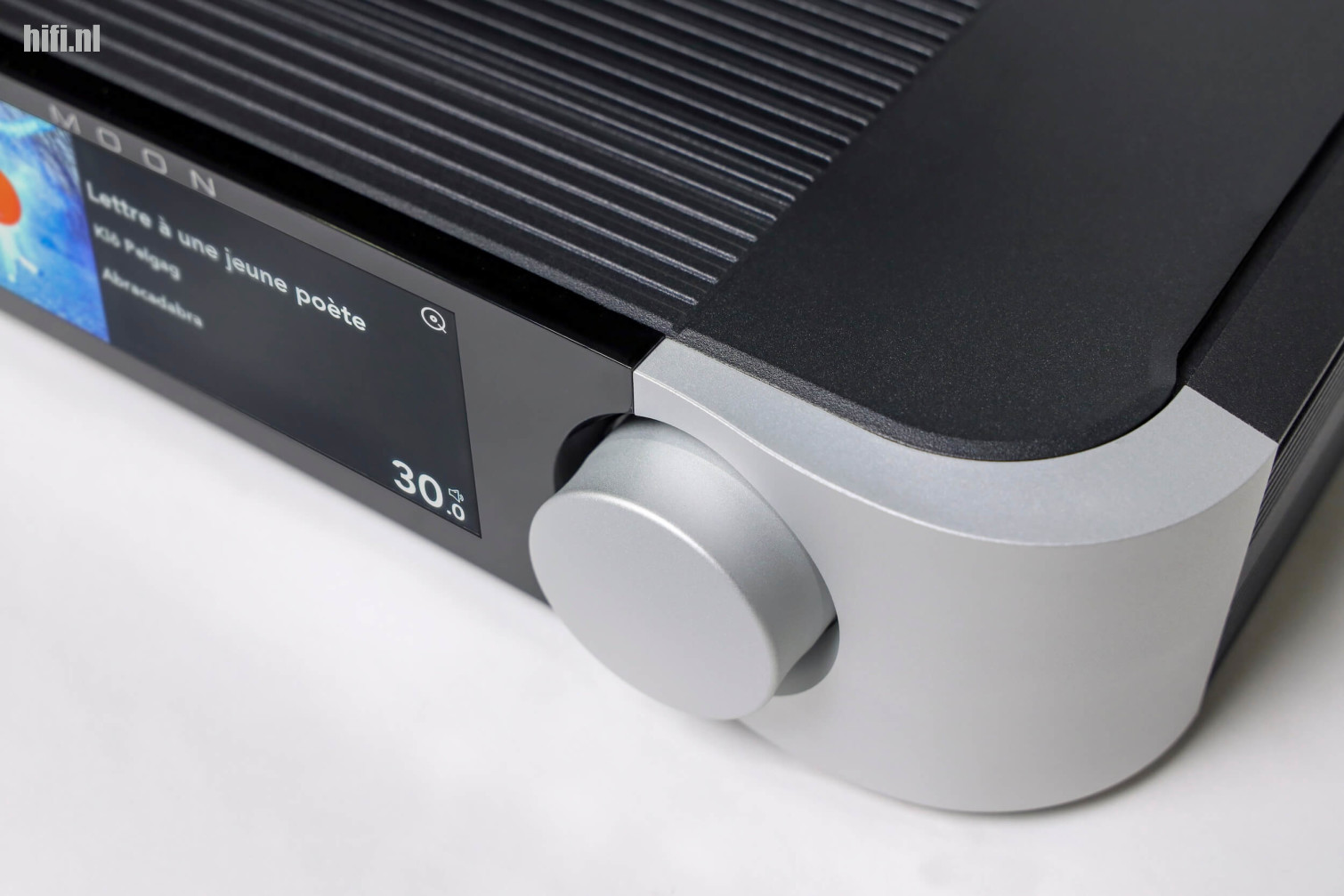
The Canadian high-end audio manufacturer Simaudio unveiled its brand-new MOON 371 to the public during the Dutch Audio Event 2025. According to the company, the MOON 371 is a Network Player Amplifier. Simply calling it an amplifier doesn’t really do it justice. It is such a complete and refined piece of equipment that the term barely covers its scope.
This first model from the new Compass Collection sits just below the MOON North Collection, which was introduced recently and represents the very best Simaudio has to offer. Everything that used to fall under the “600 Series” and above now resides in the North Collection. Below that range, MOON previously offered the NEO Series, though that designation has since been retired.
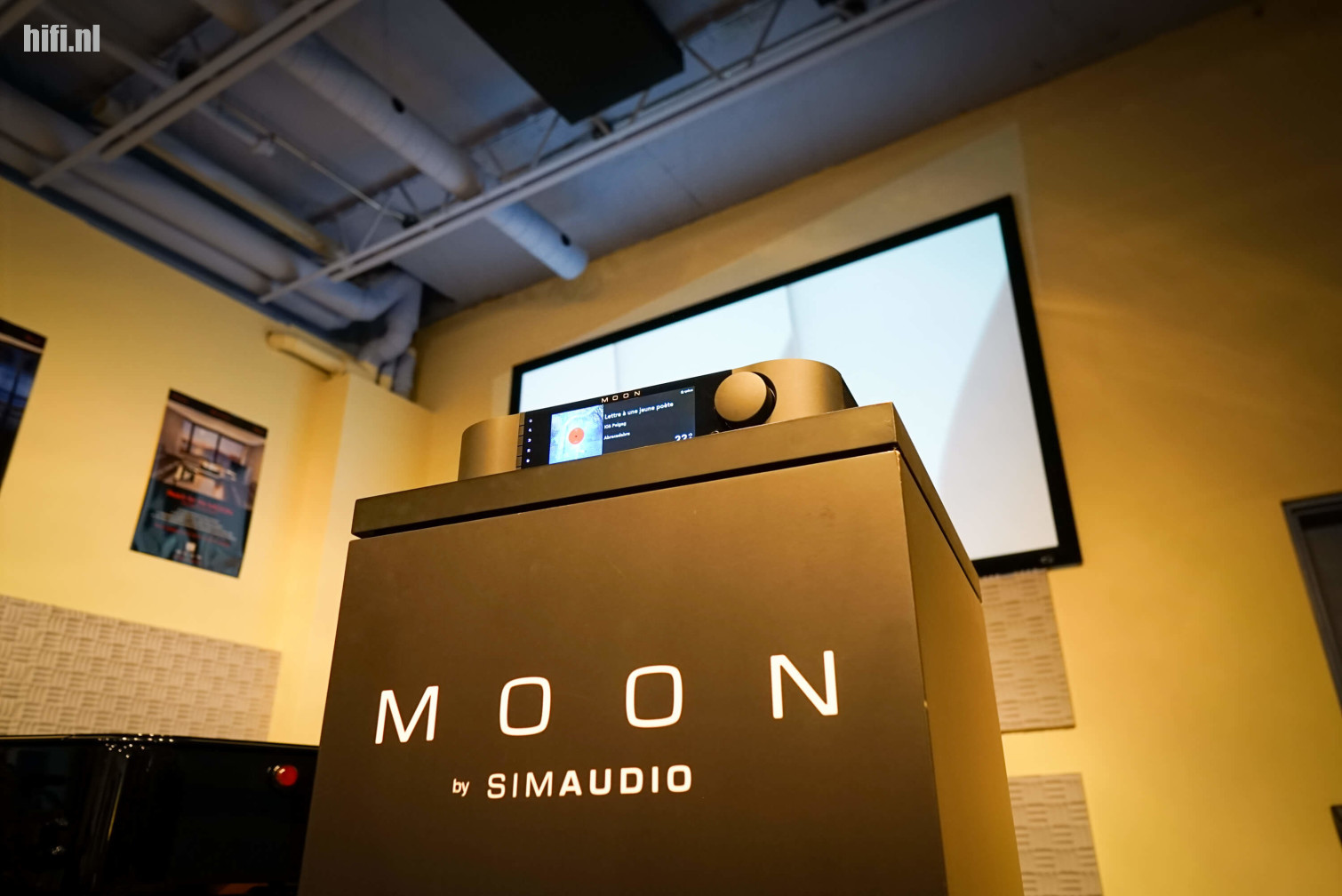
MOON Compass
The Compass Collection now takes over the segment beneath the North Series. This makes perfect sense, as one needs a compass to find true north. Much of the technology developed for the North Collection has trickled down into these new Compass models.
Even the materials feel and look more premium than those used in MOON’s previous midrange offerings. The characteristic “cheeks” of this new Collection are now milled from solid aluminum instead of the plastic end caps used before. With this, the Compass Collection sits closer than ever to the luxurious standards of the North Collection.

Just a day after the DAE show and its official launch, I received this beautifully designed streaming amplifier for review from the Dutch distributor More Music. An absolute world exclusive, as no production or review samples were available yet. This sort of thing rarely happens, but the enthusiasm surrounding this new machine and the fact that it is the first model in a long-awaited collection made the importer eager to share it with the world.
During the show, review appointments were quickly arranged and I was later thoroughly briefed by Géraldine Brinchault, International Account Manager for MOON at Simaudio, about all the new technologies and design innovations that have been built into this cornerstone of the Compass Collection.
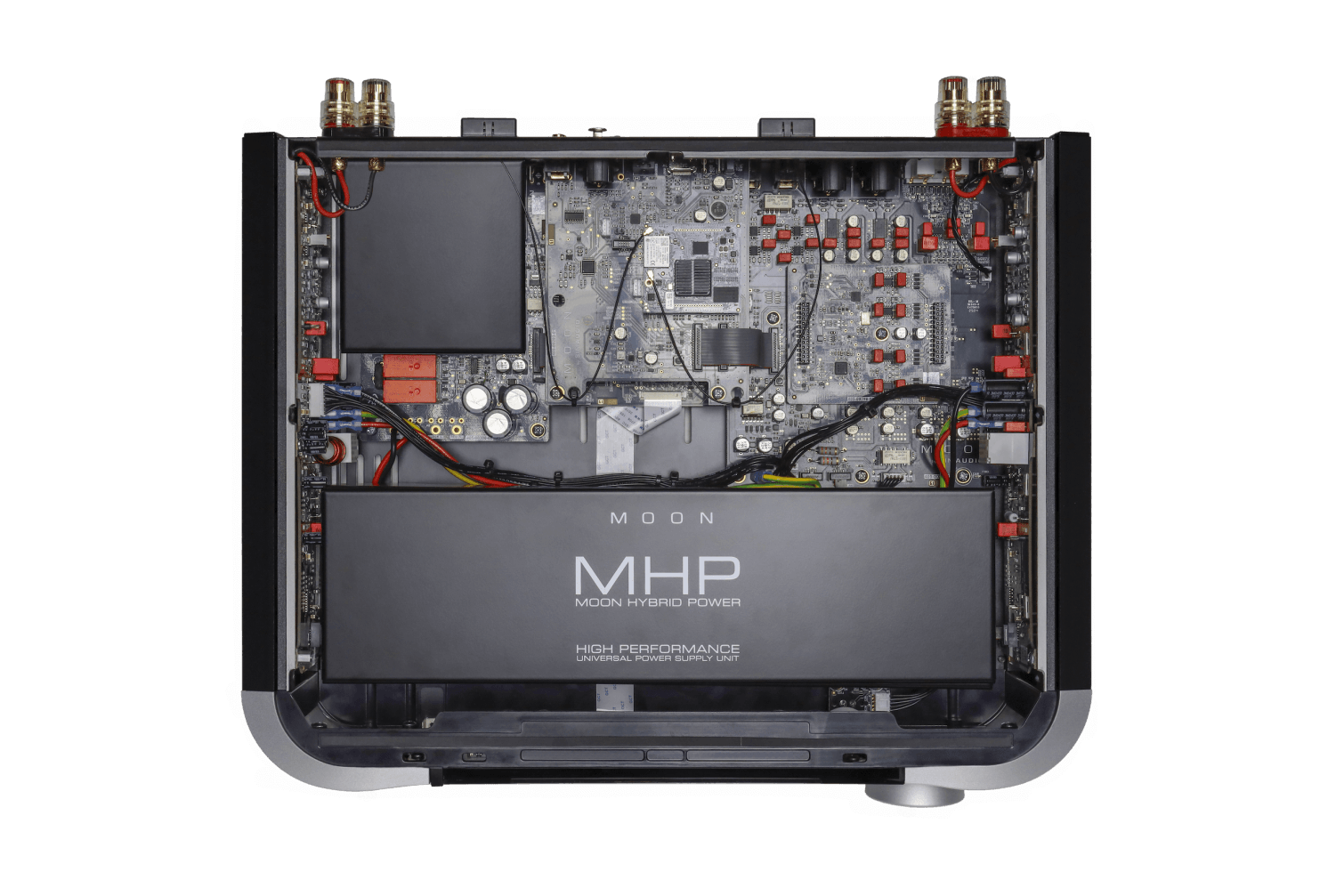
We may quite literally call it a cornerstone. The MOON 371, weighing in at nine kilograms and measuring 42.9 x 8.7 x 38.5 cm, is made entirely from aluminum. It is a mature hi-fi component built to Simaudio’s strictest standards and possesses a full-sized, substantial presence. Compared with the previous NEO models, the manufacturer has made several visual refinements. There are no visible screws on the chassis, and instead of an applied logo, the MOON emblem is now cast directly into the top plate. That top panel also features a carefully designed ventilation grille to ensure efficient cooling, yet it has been engineered so that the internal circuitry remains hidden from view when looking from the front; lending the unit a calm, uncluttered appearance.
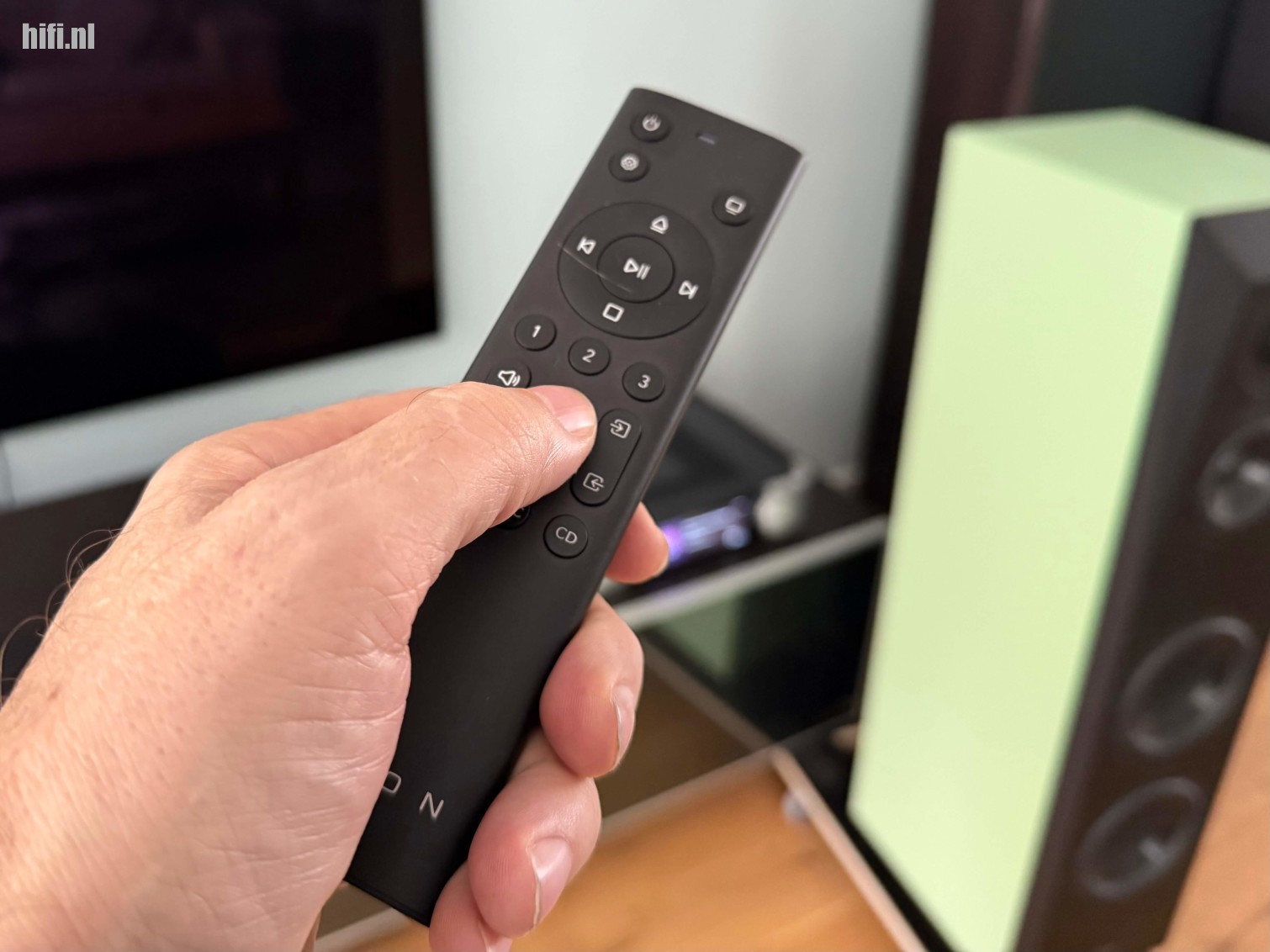
Operating the MOON 371 is refreshingly straightforward and intuitive. The device can be controlled via the sleek aluminum CRM-4 remote, through the front panel itself, or by using the MiND app. To the left of the generous display, a vertical row of buttons provides access to standby, mute, source selection, setup, and menu confirmation.
On the right side a large, precision-milled aluminum volume knob dominates, also functioning as a rotary selector within the menu system. The knob feels weighty and decidedly premium. The bright color display shows all settings, streaming information, and album art with vivid clarity. It is not touch-sensitive – a conscious decision that prevents the surface from becoming smudged and greasy in appearance. All streaming functionality is handled via the MiND 2 platform, controlled exclusively through the app, which for years has been regarded as one of the finest in its class.
Shortly after the MOON 371 was safely returned to the distributor, I received encouraging news: a brand-new MiND 3.0 app had just been released for Android users. An iPhone beta version was already available at that time, with the final iOS release expected very soon.
The new MiND 3.0 has been completely redesigned from the ground up, and I fully expect it to represent another significant leap in usability and functionality.
Functionalitity and connectivity
The range of functionality built into the MOON 371 is nothing short of impressive. This integrated amplifier is equipped with a high-quality digital-to-analogue converter, Simaudio’s proprietary MiND 2 multiroom/multizone streaming platform, and a refined MM/MC phono stage. In addition to streaming from UPnP music servers, MiND 2 supports online services such as Tidal, Qobuz, Deezer, and internet radio. Furthermore, it offers Tidal Connect, Qobuz Connect, and Spotify Connect compatibility. The second-generation MiND platform also provides multiroom capability, an optimized control interface, Roon Ready certification, and high-resolution streaming. The internal DAC handles PCM up to 32-bit/384 kHz and DSD256, and through MiND 2, also supports MQA playback.
According to Simaudio, the DAC used here is state-of-the-art, though the brand and model of the chip are not disclosed. Given that MOON has long favored ESS Sabre chipsets in its components, it’s safe to assume this unit also employs a premium DAC from that family.
Inspecting the rear panel reveals a complete and well-considered array of connections. The speaker terminals are robust and accept banana plugs, spades, and bare wire. Two plastic covers conceal the Wi-Fi and Bluetooth antennas. The amplifier offers a phono input, an RCA line input, and even a balanced XLR input.

On the digital side, there’s an HDMI ARC, an optical Toslink, and two coaxial S/PDIF inputs. Additionally, there are two USB-C ports, a trigger connection and two RJ45 sockets. One for a wired network connection and the other for MOONLink, Simaudio’s proprietary communication system. Through MOONLink, network players, preamps, and power amplifiers can communicate over a standard RJ45 cable. Functions such as standby, volume control, input selection, and display settings can all be synchronized across connected devices. MOONLink even allows for simultaneous firmware updates and system configuration changes across all linked components.
MDCA and MHP technology
During my conversation with Géraldine Brinchault, she explained that many of the innovations developed for the North Collection have trickled down into the Compass Collection, including MDCA technology. The MOON Distortion-Cancelling Amplifier delivers a mighty 100 watts per channel into 8 ohms and an impressive 200 watts into 4 ohms. These are conservative “MOON watts”, meaning that actual output could well exceed those figures. The amplifier’s audio bandwidth extends from 5 Hz all the way up to 100 kHz, measured within a 3 dB margin.
Astonishing numbers even for a separates system, let alone an integrated amplifier.
According to Simaudio, the MDCA design corrects distortion without touching the musical signal itself. Instead of traditional feedback loops, it compares the input and output signals and compensates only for the smallest deviations via a correction circuit that sits entirely outside the signal path. This approach preserves the signal’s purity, avoiding side effects such as phase shift, delay, or instability that can arise in conventional feedback designs. The result is exceptionally low distortion and noise (0.003% at full output), superb linearity, an ultra-wide frequency response and a high damping factor of 425.
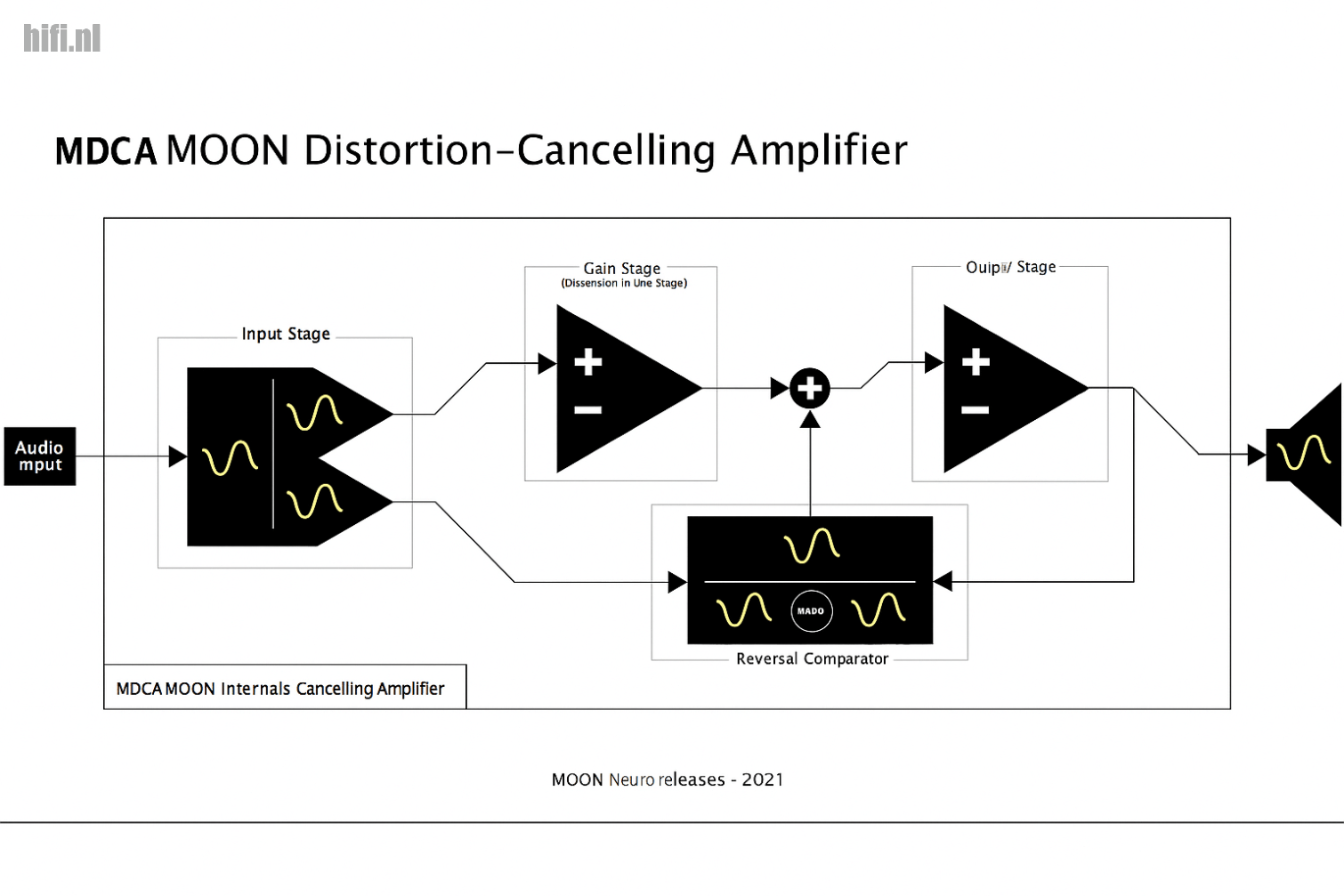 Because MDCA operates as a fully DC-coupled design, there is no need for additional circuitry to eliminate DC offset on the outputs. This is an important factor that contributes directly to the amplifier’s transparency and openness. Both signal-to-noise ratio and channel separation measure an impressive 108 dB.
Because MDCA operates as a fully DC-coupled design, there is no need for additional circuitry to eliminate DC offset on the outputs. This is an important factor that contributes directly to the amplifier’s transparency and openness. Both signal-to-noise ratio and channel separation measure an impressive 108 dB.
Naturally, such performance wouldn’t be possible without a specially developed power supply. With MOON Hybrid Power (MHP), the company achieves the purity and silence of a linear supply, combined with the efficiency and cool running of a switching design. It’s fair to say that with this technology, Simaudio hasn’t just raised the bar, it has thrown it squarely into the realm of much higher-end contenders.
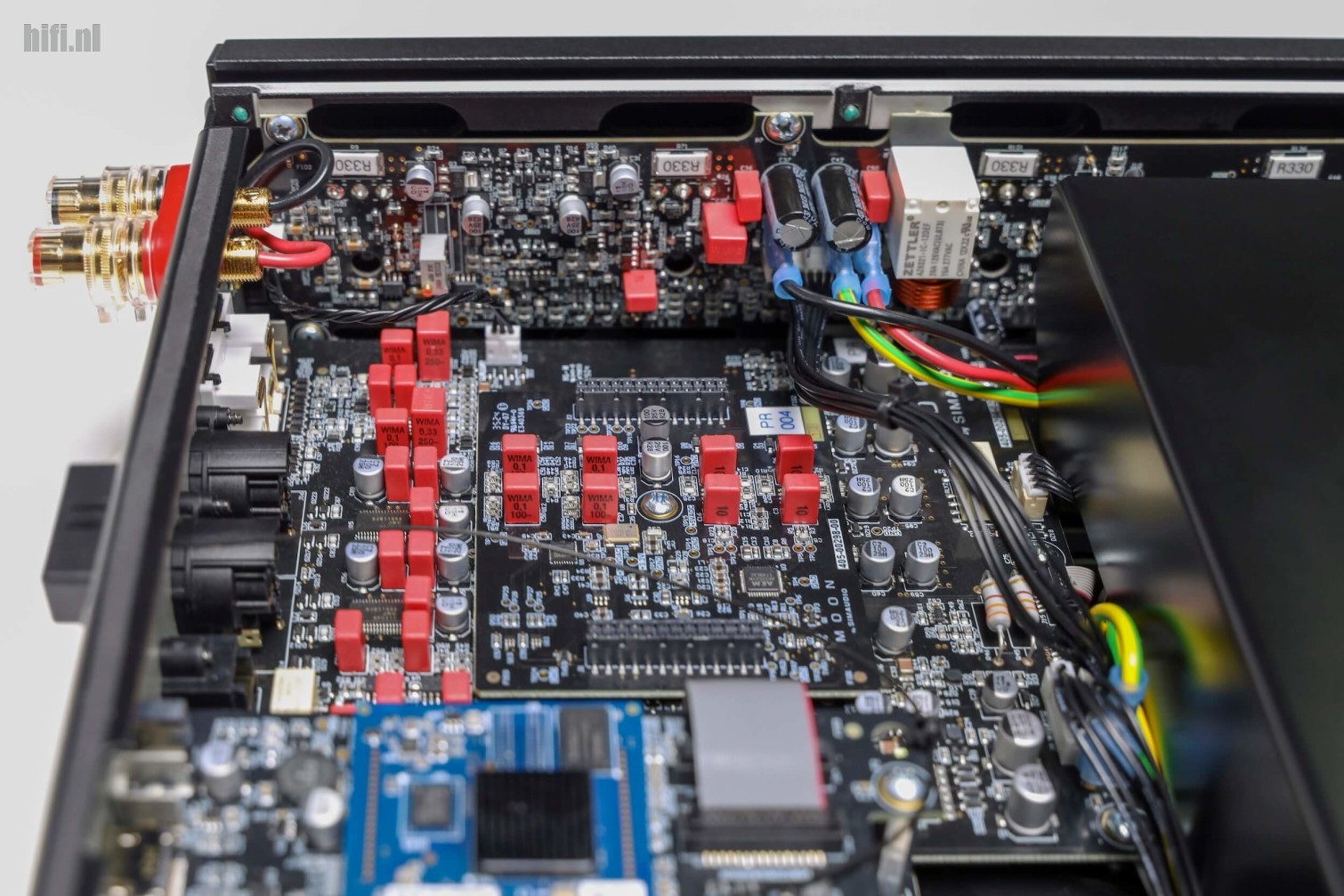
Finally, the amplifier features an integrated MM/MC phono stage. This RIAA amplifier has a fixed input impedance that makes most MM and MC cartridges with an average output level feel right at home. Thanks to the quiet and stable MHP power supply and the extremely low distortion of the MDCA circuit, this phono stage promises vanishingly low noise and a highly transparent musical presentation.
It was time to sit down and put all these claims to the test. For listening, I used my Usher MD2 Beryllium loudspeakers, Driade Flow 808 Reference speaker cables, and a Synergistic Research Pink AC power cord.
MDCA Music experience
Streaming “A Sacred Choice” from The Orb’s Buddhist Hipsters via Qobuz, I’m transported into a playful musical landscape of dance and reggae. The depth, spaciousness, and effortless layering with which the relaxed basslines and sound effects fills the room immediately lifts my mood.
The sense of timing and rhythmic drive (PRaT) is spot on. Bass is tight, controlled, and punchy without ever becoming overpowering. I can’t help but turn the volume up a few notches and surrender to the Caribbean cheerfulness that radiates from the track. The warmth and speed of the 371’s delivery keep me engaged with eyes closed. This is because of the natural ease with which even the smallest details and nuances unfold in space, free of exaggeration or harshness that often causes listening fatigue..
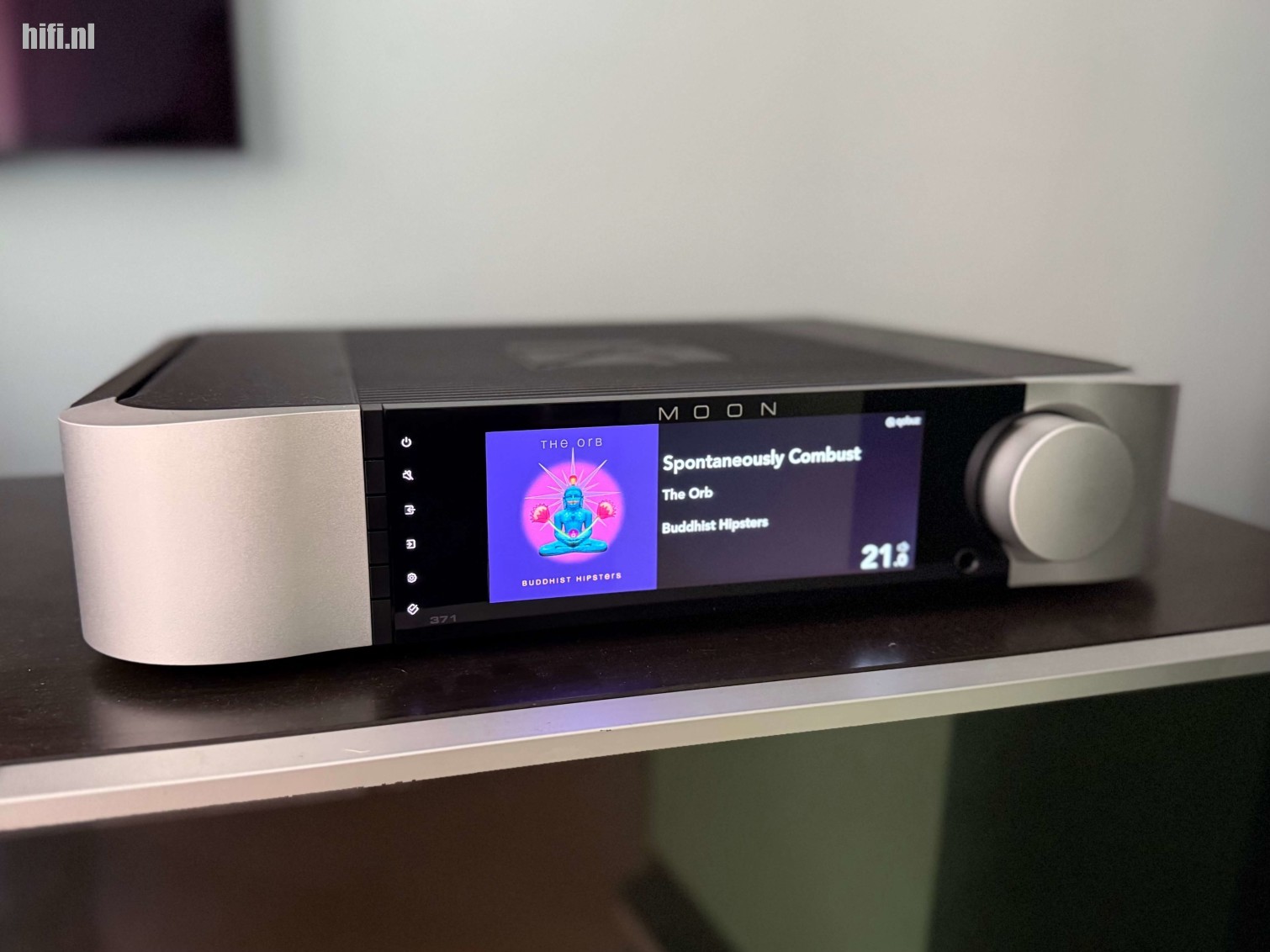
Switching to analogue, I connect my vintage Denon DP-47F turntable with DL-110 cartridge to the phono input. From Jeff Wayne’s 1978 classic The War of the Worlds, I cue up “Brave New World”. The experience mirrors what I heard from streaming: an enveloping musicality that feels alive. Vocals and dialogue are perfectly centered, percussion and keyboards are cleanly layered and spatially distinct, and violins and guitars stretch gracefully across the soundstage like an arching canopy. Whatever track I play, I’m struck by the transparency, musical layers and spaciousness. These are qualities I seldomly encounter playing my old vinyl records. The MOON’s phono stage breathes new life into every groove and even unwashed records sound remarkably clean, with only the faintest crackle reminding me of their age.
Next, I stream a selection of test tracks from my NAS. Playing Enya’s “The Humming” in 96 kHz MQA, I’m surprised to see the DAC not only recognize the file but also fully decode it. Honestly, this is quite a feat for a format that’s now largely abandoned by streaming services and the music industry in general. Comparing this MQA version with the 96 kHz FLAC stored locally and the same track via Qobuz, I notice subtle but clear differences. The MQA rendition delivers a touch more definition and instrumental separation, while the FLAC version sounds warmer and more natural, with vocals presented more convincingly. Qobuz, however, offers the most body and weight overall, edging out the others by a narrow but audible margin.
To eliminate mastering variations, I turn to “Living” by Gunnar Hoff, taken from the 2L High-Res Test Bench. Listening across various resolutions and formats, I find the 44.1 kHz CD version already convincing, but higher bitrates add warmth, a deeper soundstage and smoother flow. In 352.8 kHz MQA Studio format, there’s a touch more edge and attack compared to the high-res FLAC.
Since all 2L files share the same master, this reveals differences that reflects the format itself rather than differences in mastering. Regardless of the digital source, percussion energy and cymbal shimmer are portrayed with lifelike precision, never harsh or brittle. The soundstage remains stable and coherent, expanding slightly in spaciousness with higher resolutions.
Even when using HDMI audio passthrough, the phantom center for vocals and dialogue is rendered with exemplary focus. Depending on the age of the recording, overall sound quality remains consistently high. In well-recorded later issued live concerts, I even sense the audience extending around me, behind the listening position, without any extra surround speakers. Truly impressive.
Verdict
With the MOON 371 from the Compass Collection, I not only find my way to music from every corner of the world, but this compact all-rounder also puts many far more expensive high-end competitors firmly in their place. It sounds pure, smooth, rounded and fluid but never dull or sluggish. What it consistently delivers is a deeply relaxed yet engaging musical experience. Thanks to the MDCA technology, every nuance and microdetail is portrayed with precision, while the soundstage stands rock-solid.
The amplifier’s perfect phase coherence, inherited from the North Collection, allows details and spatial cues to be projected effortlessly into the room. With the right loudspeakers, they seem to vanish completely, replaced by an expansive, three-dimensional bubble of sound.
The perfection doesn’t end there. The look, feel, and overall user experience have been thoughtfully refined. The MOON MiND app remains a dream to use. Having worked with many control apps over the years, I can say that while MiND avoids bloating itself with features no one needs, it executes the essentials flawlessly.
If you own multiple MOON components, selecting a device or zone is effortless. Through the Library tab, you can access internet radio, podcasts, Deezer, HighResAudio, Qobuz, Spotify, or Tidal. USB sticks and UPnP media servers are also neatly integrated. Browsing can be done folder by folder, or filtered by genre, artist, album, album artist, playlist or smart playlist.
Library indexing is quick and the MOON 371 handles large music libraries with ease. The app remembers your browsing position, making exploration relaxed and intuitive. It doesn’t matter whether you add tracks from a local server, a streaming service, or internet radio.
MiND 2 automatically switches to the right source, seamlessly, without even the slightest hiccup. The only small flaw is that the alphabetical scroll bar on the right side of the screen doesn’t yet allow for quick letter selection.
This integrated streaming amplifier delivers performance that frankly doesn’t belong in its price class. Such refinement is normally reserved for systems costing five or even six figures. In a single chassis that includes virtually everything you could ever need, and this is a rarity. Don’t take my word for it. Just book a listening session at your nearest MOON dealer and experience this MOON 371 for yourself.
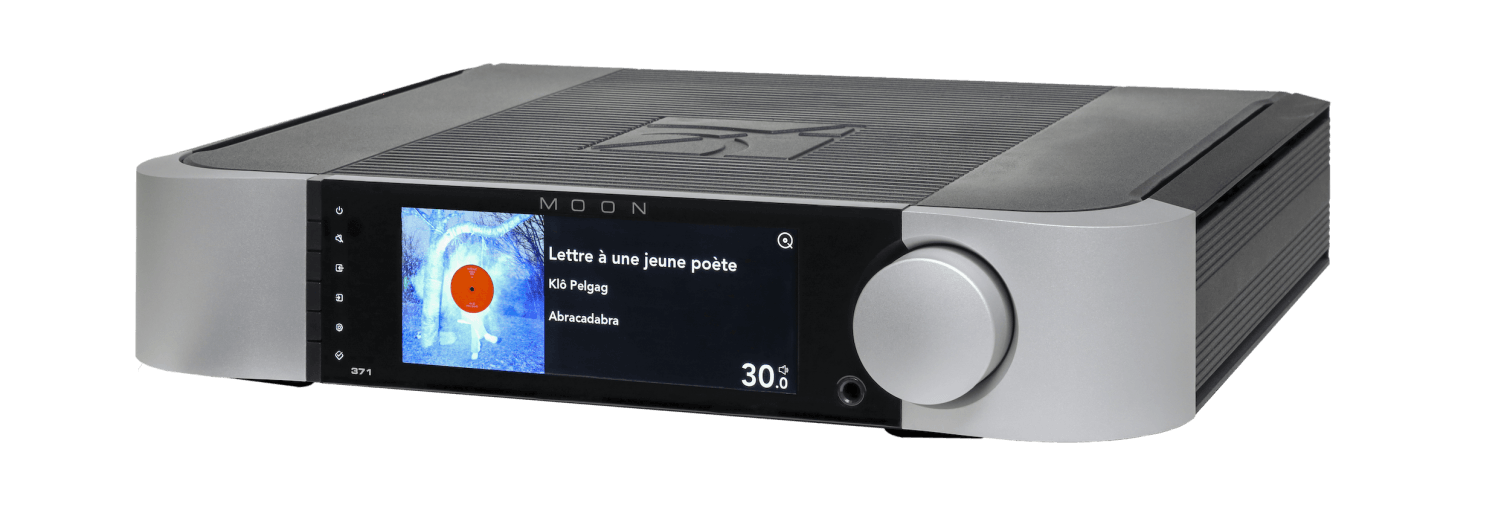
.
 Conclusie
Conclusie
With the launch of the MOON 371 in its new Compass Collection, Simaudio has set the bar extraordinarily high. In truth, you hardly need more than this beautifully sculpted MOON 371. Whatever album or genre I play, the result is uplifting, engaging and irresistibly musical. The North Collection technologies that Simaudio has implemented performs superbly and throughout my time with the unit I’ve been repeatedly amazed. With its fluid sound and understated aesthetics, the MOON 371 has captured my heart on multiple levels. It approaches perfection. Perfection for the eyes, the fingertips and the eardrums alike.
MOON 371
6.800 euro | www.simaudio.com
Rated 5 / 5
